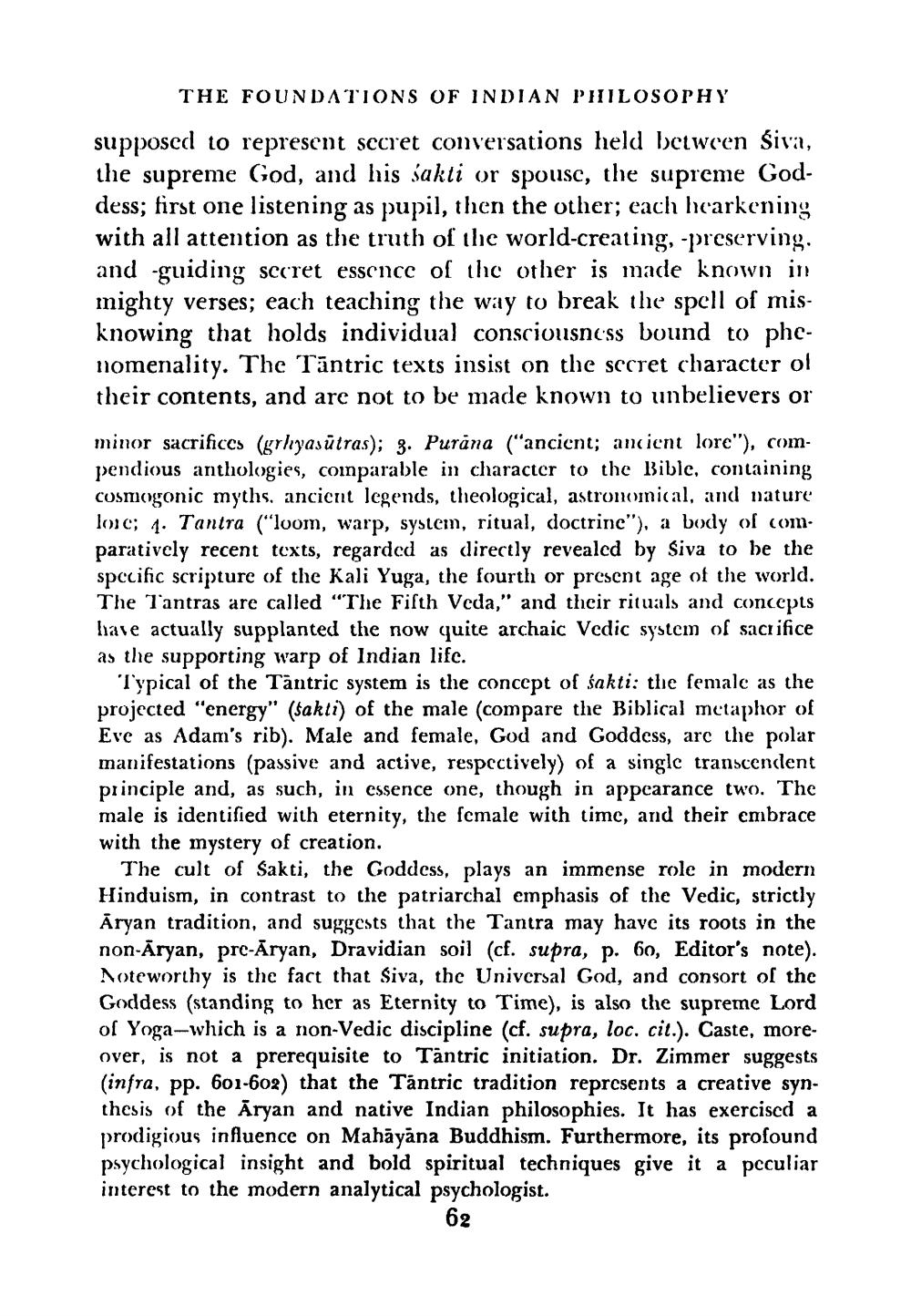________________
THE FOUNDATIONS OF INDIAN PHILOSOPHY supposed to represent secret conversations held between siva, the supreme God, and his sakti or spouse, the supreme Goddess; first one listening as pupil, then the other; each hearkening with all attention as the truth of the world-creating, -preserving. and -guiding sccret essence of the other is made known in mighty verses; each teaching the way to break the spell of misknowing that holds individual consciousness bound to phcnomenality. The Tántric texts insist on the secret character ol their contents, and are not to be made known to unbelievers or
minor sacrifices (grlyasūtras); 3. Purāna ("ancient; ancient lore"), compendious anthologies, coinparable in character to the Bible, containing cosmogonic myths, ancient legends, theological, astronomical, and nature louc; 4. Tantra (“loom, warp, system, ritual, doctrine"), a body of com. paratively recent texts, regarded as directly revealcd by Siva to be the specific scripture of the Kali Yuga, the fourth or present age of the world. The Tantras are called "The Fifth Veda," and their rituals and concepts have actually supplanted the now quite archaic Vedic system of sacrifice as the supporting warp of Indian life.
Typical of the Tântric system is the concept of sakti: the female as the projected "energy" (sakti) of the male (compare the Biblical metaphor of Eve as Adam's rib). Male and female, God and Goddess, arc the polar manifestations (passive and active, respectively) of a single transcendent principle and, as such, in essence one, though in appearance two. The male is identified with eternity, the female with time, and their embrace with the mystery of creation.
The cult of Sakti, the Goddess, plays an immense role in modern Hinduism, in contrast to the patriarchal emphasis of the Vedic, strictly Āryan tradition, and suggests that the Tantra may have its roots in the non-Aryan, prc-Aryan, Dravidian soil (cf. supra, p. 60, Editor's note). Noteworthy is the fact that Siva, the Universal God, and consort of the Goddess (standing to her as Eternity to Time), is also the supreme Lord of Yoga-which is a non-Vedic discipline (cf. supra, loc. cit.). Caste, moreover, is not a prerequisite to Tantric initiation. Dr. Zimmer suggests (infra, pp. 601-602) that the Tántric tradition represents a creative synthesis of the Aryan and native Indian philosophies. It has exercised a prodigious influence on Mahāyāna Buddhism. Furthermore, its profound psychological insight and bold spiritual techniques give it a peculiar interest to the modern analytical psychologist.
62




